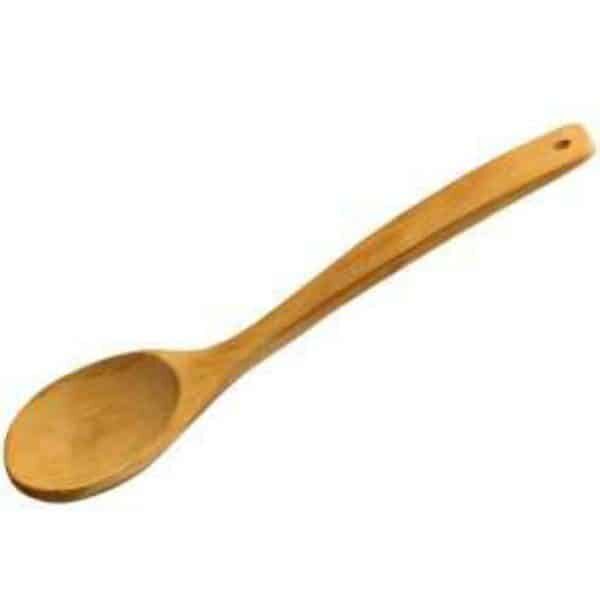Last Updated on by Mitch Rezman
Because we wear less clothing in the summer months, short sleeves, tank tops and shorts we might be feeling our birds nails little more on our skin. This is a sure sign that it’s time to trim your birds nails.
The thought of this makes a lot of people hyperventilate because they’re usually faced with three choices.
Find someone to do it professionally. Take your bird to the vet which may incur a large bill for blood workup or a wellness check, or three, doing it yourself.
There’s a lot of old school thinking out there and the thinking is it’s best to use a pet nail clipper. And that’s fine.
The biggest drawback to this is cutting what is called the “quick” which ends somewhere before the nail ends.
This means inevitably you can hurt the bird and draw blood. If your plan is to do it yourself its important to have some sort of blood clotter available like blood stop powder. Although a clotting/styptic product is best, you can use cornstarch or flour in a pinch.
Bird Health Tip: We’ve heard stories where the coagulant failed to stop the bleeding because it was too profuse. If this is the case, before you panic, try dragging the birds bleeding nail across a bar of soap, something a vet once recommended.
Although some birds will remain docile during a nail clipping its best to first get the bird to accept you playing with its toes.
This involves a lot of toe touching along with lots of praise, fun noises and laughter and food/treat rewards. Also, dys or weeks before starting produce the clipper somewhere in the birds view, on the table near by, next time closer and then reward the bird with a favorite treat for not reacting badly.
We prefer the rotary trimmer on the bird’s feet and feel it’s more humane. Whatever method you choose you will need to restrain your bird. It’s always best to have two people clip birds nails. One to hold the bird and one to do the nail trimming.
An important procedure every bird owner should know is how to restrain a bird. The most common method is toweling. Toweling is not only useful for grooming but can come in handy in a medical emergency. Instructions on how to properly towel a bird can be found here.
Dr. Greg Burkett, a board-certified avian veterinarian invented the Avistraint
Once the bird is restrained, simply move from toe to toe talking gently to the bird all the time. It will go quickly and your bird won’t feel a thing much like when you and I trim our own nails.
Trim a little bit, look at the nail, no blood, no sign of the quick, trim a bit smoothing rough edges if needed. Using this method also potentially avoids causing pain and possible blood loss to your pet bird.
I am purposely leaving out a discussion on beak trimming here because it is a far more complex procedure that should only be performed after you’ve had expert instruction or preferably have had it done by a professional or your veterinarian. Overgrown beaks can be a health issue only your avian vet can diagnose.
An overlooked and misused accessory in a lot of cages is a grooming perch. I say misused because we carry several varieties of this type of perch and they should not be used by the birds to sleep on.
Sleeping on a grooming perch can be highly detrimental to your birds health. If in a cage and non flighted, birds are on their feet 24/7. They sleep on their feet.
They even sleep on 1 foot. They are able to sleep without falling off the perch because they have the “flexor tendon” which allows them to actually lock their foot onto a perch.
We feel the grooming perch is best installed lower on the inside of the cage door or near a food dish. When installed on the inside of the cage door it allows the bird to come out of the cage and still be on the cage and usually they will do a “happy dance” because of getting out of the cage.
The happy dance will help keep the nails trim on the grooming perch. Grooming perches placed by their food dishes are another good idea because the birds are fairly active while eating will often scrape their beak to remove food particulate.
Rubbing the beak on an abrasive surface the beak will stay trimmer and smoother keeping the most important part of your birds anatomy in tip top shape.
Here’s a brief video (only one we could find) that illustrates how easy it can be to keep your birds nails short and smooth.
Mitch Rezman
General Manger
WindyCityParrot.com
Simply Everything for Exotic Birds
Author Profile

Latest entries
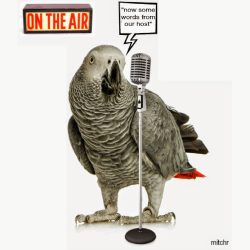 Bird & Parrot CareJune 20, 2025Understanding the Best Way to Use Prevue Pets Mimic Me Voice Trainer
Bird & Parrot CareJune 20, 2025Understanding the Best Way to Use Prevue Pets Mimic Me Voice Trainer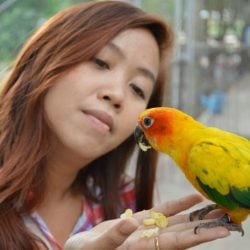 Bird BehaviorJune 6, 2025How Do I Keep My Parrot From Dumping His Food Every Day?
Bird BehaviorJune 6, 2025How Do I Keep My Parrot From Dumping His Food Every Day?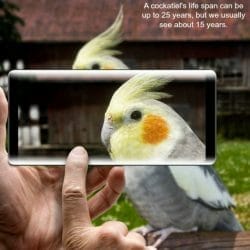 Birds & LightingMay 16, 2025I Am Seeking Clarity About Lighting for My Birds Cage
Birds & LightingMay 16, 2025I Am Seeking Clarity About Lighting for My Birds Cage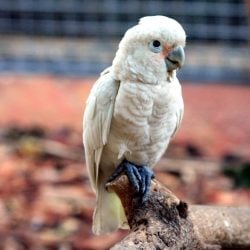 Bird RescueApril 29, 2025How Do We Re-Home a 17 yr Goffin Cockatoo?
Bird RescueApril 29, 2025How Do We Re-Home a 17 yr Goffin Cockatoo?


